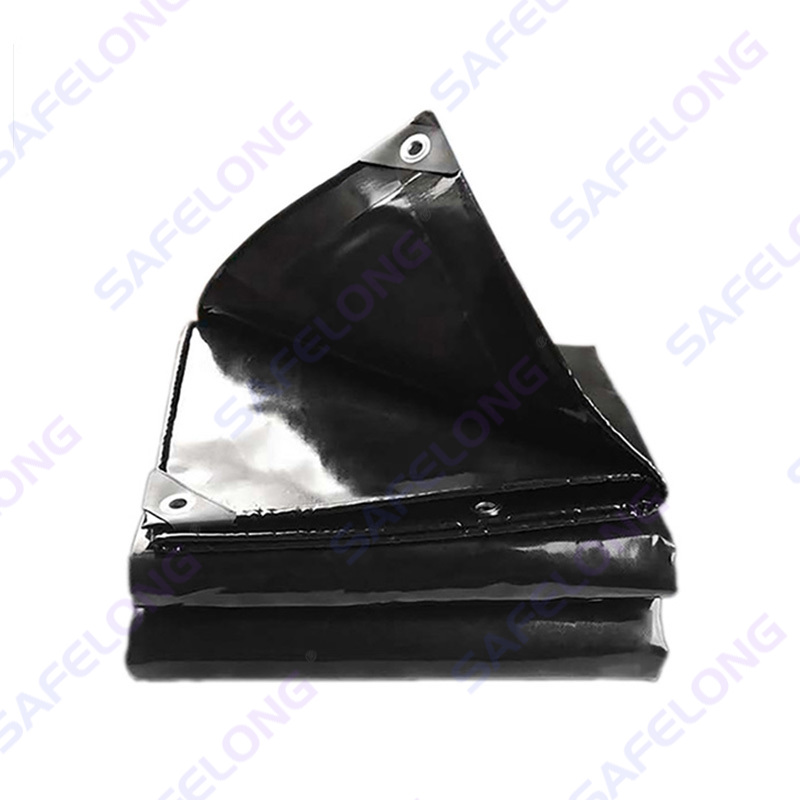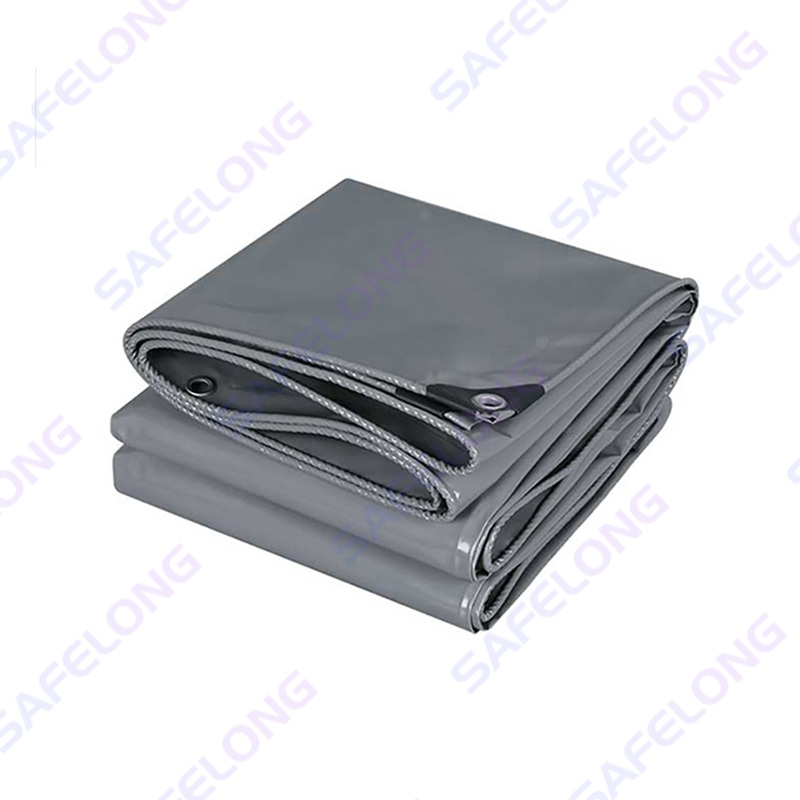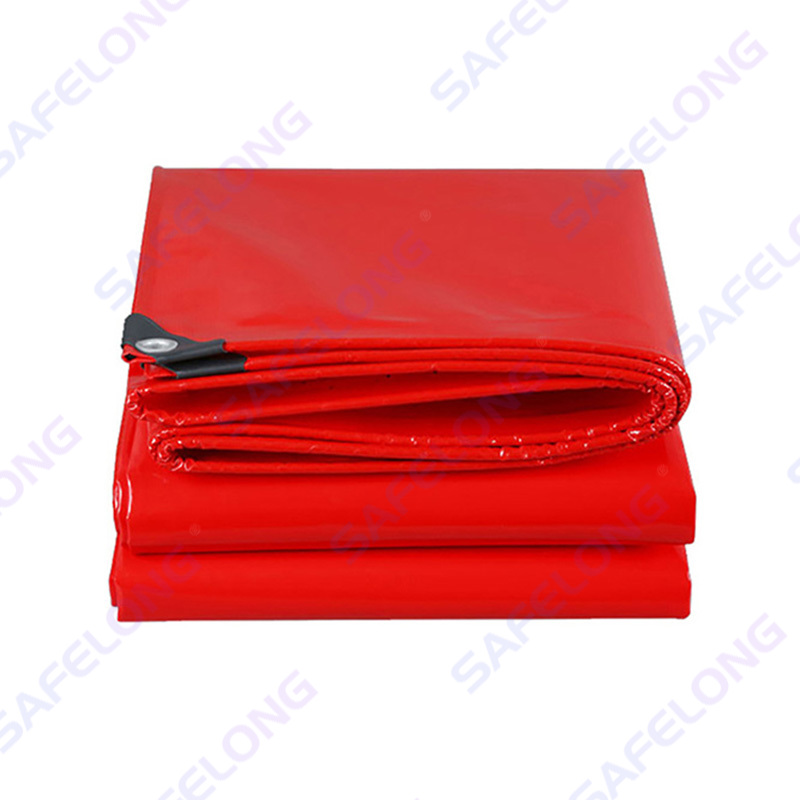PVC tarpaulin covers are a versatile and durable solution for a wide range of applications. They are widely used in construction, agriculture, transportation, and event management due to their excellent weather resistance, durability, and versatility. This guide provides a comprehensive overview of PVC tarpaulin covers, including their features, applications, and purchasing considerations.
Content
- 1 What is PVC Tarpaulin?
- 2
- 3 Key Features of PVC Tarpaulin
- 4 Applications of PVC Tarpaulin
- 5 Applications in Construction and Agriculture
- 6 Applications in Transportation
- 7 Applications in Event and Exhibition
- 8 Applications in Industrial Settings
- 9 Purchasing Considerations
- 10 Installation Tips of PVC Tarpaulin
- 11 Maintenance Tips of PVC Tarpaulin
- 12
- 13 Cleaning Tips of PVC Tarpaulin
- 14 Cost Considerations and Value Proposition
- 15 Supplier and Vendor Selection
- 16 Environmental Impact and Sustainability of PVC Tarpaulin
- 17
- 18 Future Trends and Innovations in PVC Tarpaulin Technology
- 19 Global Market and Industry Insights
- 20 The Future of PVC Tarpaulin
What is PVC Tarpaulin?
PVC tarpaulin is a heavy-duty sheet made from PVC-coated polyester scrim. It is a dense plastic material with waterproof properties, making it ideal for protecting goods and structures from the elements. PVC tarpaulin is known for its flexibility, durability, and resistance to weather and environmental factors .
Key Features of PVC Tarpaulin
| Feature | Description |
| Water Resistance | PVC tarpaulin is inherently waterproof, making it ideal for protecting goods and equipment from rain and moisture . |
| Durability | PVC tarpaulin is strong and durable, capable of withstanding harsh weather conditions, abrasion, and rough handling . |
| Weather Resistance | It can withstand extreme weather conditions, including UV rays, heat, cold, and wind, without deteriorating or losing its performance . |
| Flexibility | PVC tarpaulin is flexible and can be easily shaped or cut to fit various applications . |
| Fire Retardant | Some PVC tarpaulins are treated with flame-retardant additives to enhance safety . |
| Anti-UV | PVC tarpaulin is resistant to UV rays, making it suitable for outdoor applications . |
| Anti-Mildew | Some PVC tarpaulins are treated with anti-mildew agents to prevent mold and mildew growth . |
| Customization | PVC tarpaulin can be customized in terms of size, color, and thickness to meet specific needs . |
| Longevity | PVC tarpaulin is designed for long-term use and can last several years with proper maintenance . |
Applications of PVC Tarpaulin
| Application Area | Specific Uses |
| Transportation | Truck covers, boat covers, car covers, container covers, and vehicle protection |
| Construction | Covers for scaffolding, construction sites, warehouses, and temporary shelters |
| Agriculture | Covers for crops, livestock, hay, and farm equipment; used in greenhouses and irrigation |
| Industrial Use | Covers for machinery, equipment, and storage areas; used in factories and industrial facilities |
| Outdoor and Recreational | Tents, awnings, swimming pool covers, and leisure applications |
| Storage and Protection | Covers for materials, storage areas, and outdoor storage |
| Specialized Uses | Used in advertising, banners, and temporary structures |
Applications in Construction and Agriculture
PVC tarpaulin is a cornerstone in the construction industry. It is used for temporary roofing, covering materials during construction, and protecting materials from the elements. In agriculture, it is used for crop protection, covering greenhouses, and protecting harvests from rain and sun. The flexibility and durability of PVC tarpaulin make it ideal for these applications.
Applications in Transportation
In the transportation sector, PVC tarpaulin is used for covering trucks, trailers, and other vehicles. It is also used for boat covers, protecting boats from UV damage and weather. The waterproof and UV-resistant properties of PVC tarpaulin make it ideal for long-term storage and transportation.
Applications in Event and Exhibition
PVC tarpaulin is widely used in event management and exhibitions. It is used for temporary structures, marquees, and event coverings. The ease of installation and customization options make it a popular choice for event organizers.
Applications in Industrial Settings
In industrial settings, PVC tarpaulin is used for protection, storage, and other applications. It is used for covering machinery, protecting equipment from dust and moisture, and for temporary enclosures.
Purchasing Considerations
| Consideration | Description |
| Material Quality | Choose high-quality PVC tarpaulin to ensure durability and long-term performance. Inferior quality may lead to frequent replacements . |
| Thickness and Durability | Consider the thickness and durability requirements, such as single or double-sewn features, heat-welded features, and UV resistance . |
| Size and Dimensions | Select the appropriate size and dimensions to meet your specific application needs, such as covering areas or vehicles . |
| Customization Options | Consider customization options such as color, printing, and special features like UV resistance or flame retardancy . |
| Supplier and Reputation | Research and choose reputable suppliers with good customer reviews and warranties to ensure quality and reliability . |
| Environmental Impact | Consider the environmental impact of the product and choose materials that align with your sustainability goals . |
| Cost and Budget | Evaluate the cost of the product and compare prices from different suppliers to ensure you get the best value . |
Installation Tips of PVC Tarpaulin
| Installation Tip | Description |
| Measure and Cut Accurately | Ensure the tarpaulin is cut to the correct size to fit the application, allowing for some overlap and allowance for securing . |
| Secure the Edges | Use stakes, ropes, or tensioning cords to secure the edges of the tarpaulin to prevent it from sagging or blowing away . |
| Use Fastening Methods | Attach the tarpaulin using tensioning cords, cable straps, or snap hooks to ensure it is adequately fastened on all sides . |
| Check for Tautness | Ensure the tarpaulin is taut to prevent sagging due to wind or water accumulation . |
| Avoid Sharp Objects | Store and use the tarpaulin away from sharp objects to prevent damage . |
| Proper Storage | Store the tarpaulin in a cool, dry place to maintain its integrity and longevity . |
| Inspect for Damage | Regularly inspect the tarpaulin for signs of wear, tears, or damage and repair or replace as needed . |
Maintenance Tips of PVC Tarpaulin
| Maintenance Tip | Description |
| Regular Cleaning | Clean the tarpaulin periodically using a soft brush or sponge, mild detergent, and water. Avoid using harsh chemicals or abrasive materials that may damage the waterproof coating . |
| Proper Storage | Store the tarpaulin in a cool, dry place away from direct sunlight. Sunlight and high temperatures can weaken and make the PVC material brittle. Use a protective cover or bag to keep the tarpaulin free from dust and dirt during storage . |
| Avoid Sharp Objects | Store and use the tarpaulin away from sharp objects to prevent damage . |
| Inspect for Damage | Regularly inspect the tarpaulin for signs of wear, tears, or damage and repair or replace as needed . |
| UV Protection | UV treatment is essential to resist the deterioration of the tarp. UV-resistant treatments can help extend the lifespan of the tarpaulin . |
| Avoid Harsh Chemicals | Avoid using harsh chemicals or abrasive materials that may damage the waterproof coating . |
Cleaning Tips of PVC Tarpaulin
| Cleaning Tip | Description |
| Use Mild Detergent | Use a mild detergent and water to clean the tarpaulin. Avoid harsh chemicals or abrasive cleaners that can damage the material . |
| Gentle Cleaning | Use a soft cloth or sponge to gently wipe the tarpaulin during cleaning. Avoid hard brushes or abrasive materials that can scratch the surface . |
| Rinse Thoroughly | Rinse the tarpaulin thoroughly with plenty of water to remove detergent residues. Detergent residues can damage the surface of the tarpaulin in the long term . |
| Natural Drying | Allow the tarpaulin to dry naturally in a cool, dry place. Avoid drying the tarpaulin in direct sunlight, as this can damage the PVC material . |
| Avoid Harsh Chemicals | Avoid using harsh chemicals or abrasive materials that may damage the waterproof coating . |
| Regular Cleaning | Regular cleaning can help maintain the appearance and longevity of the tarpaulin . |
Cost Considerations and Value Proposition
When purchasing PVC tarpaulin, cost is a significant factor. However, it is important to consider the total cost of ownership, which includes the initial purchase price, installation, maintenance, and replacement costs.
Initial Purchase Price
The cost of PVC tarpaulin can vary based on size, quality, and customization. Higher-quality materials may have a higher initial cost but offer better durability and performance.
Long-Term Value
While a higher-quality tarpaulin may have a higher initial cost, it often provides better value in the long term due to its durability, longevity, and reduced maintenance needs. Investing in a high-quality product can save money and time in the long run.
Bulk Purchases and Discounts
For large-scale users, purchasing in bulk can often result in cost savings. Many suppliers offer discounts for bulk orders, which can help reduce the overall cost per unit.
Supplier and Vendor Selection
Choosing the right supplier is crucial for ensuring you receive high-quality products and reliable service. Here are some key factors to consider when selecting a supplier:
Reputation and Experience
Look for suppliers with a good reputation and a proven track record in the industry. Experienced suppliers are more likely to provide high-quality products and reliable service.
Product Quality and Certifications
Ensure that the supplier offers high-quality products with relevant certifications, such as ISO 9001 or ISO 14001. These certifications indicate that the supplier meets international standards for quality and environmental management.
Customer Support and Service
Choose suppliers who offer excellent customer support and technical assistance. This can be invaluable when you need help with installation, maintenance, or troubleshooting.
Delivery and Logistics
Consider the supplier's delivery options and logistics capabilities. A reliable supplier should be able to deliver products on time and in good condition.
Environmental Impact and Sustainability of PVC Tarpaulin
While PVC tarpaulin is a highly functional and durable material, its environmental impact is a growing concern. PVC (Polyvinyl Chloride) is a synthetic polymer that is not biodegradable. However, it is recyclable under certain conditions. Many manufacturers and suppliers are increasingly focusing on sustainable practices, including the use of recycled materials and the development of more eco-friendly alternatives.
Recycling and Disposal
PVC tarpaulin can be recycled, but the process is not as straightforward as with other materials. It requires specialized facilities and can be energy-intensive. Some manufacturers are exploring the use of recycled PVC in their products, which helps reduce the demand for virgin materials.
Sustainable Alternatives
For those concerned about the environmental impact of PVC, there are alternative materials available, such as polyethylene (PE) and polypropylene (PP) tarpaulins. These materials are also durable and weather-resistant but may have different environmental footprints. It is important to evaluate the sustainability of each option based on your specific needs.
End-of-Life Management
Proper end-of-life management is crucial for minimizing the environmental impact of PVC tarpaulin. This includes proper disposal, recycling, and reuse. Some suppliers offer take-back programs or recycling services to help manage the end-of-life of their products.
Future Trends and Innovations in PVC Tarpaulin Technology
The future of PVC tarpaulin is shaped by continuous innovation and technological advancements. Some of the key trends and innovations include:
Advanced Materials and Composites
The development of advanced composite materials is one of the most exciting trends in the industry. These materials combine the best properties of different materials to create tarpaulins that are stronger, lighter, and more durable. For example, combining PVC with other polymers or reinforcing fibers can enhance tear resistance, UV resistance, and overall durability.
Smart Tarpaulins and IoT Integration
The integration of the Internet of Things (IoT) into tarpaulin technology is another emerging trend. Smart tarpaulins equipped with sensors can monitor environmental conditions, such as temperature, humidity, and structural integrity. This data can be transmitted to a central system, allowing for real-time monitoring and predictive maintenance.
Sustainable and Eco-Friendly Solutions
As environmental concerns continue to grow, there is a greater focus on developing more sustainable and eco-friendly tarpaulin solutions. This includes the use of recycled materials, biodegradable alternatives, and improved recycling processes. Manufacturers are also exploring ways to reduce the carbon footprint of production and end-of-life management.
Customization and Personalization
The demand for customized and personalized tarpaulins is on the rise. Users are looking for products that are tailored to their specific needs, whether it's size, color, printing, or functionality. Advances in digital printing and manufacturing technologies are making it easier to produce highly customized tarpaulins quickly and cost-effectively.
Automation and Efficiency
Automation in manufacturing and logistics is another key trend. Automated production lines, robotic assembly, and AI-driven quality control systems are improving efficiency, reducing costs, and enhancing product consistency. This is particularly relevant for large-scale production and high-volume orders.
Global Market and Industry Insights
The global market for PVC tarpaulin is a dynamic and rapidly evolving industry, driven by increasing demand from various sectors such as construction, agriculture, transportation, and event management. The growth of these industries, particularly in developing economies, is fueling the expansion of the PVC tarpaulin market. This growth is further supported by technological advancements, improved manufacturing capabilities, and increasing awareness of the benefits of durable and versatile materials.
Market Growth and Expansion
The demand for PVC tarpaulin is on the rise due to several key factors:
- Urbanization and Infrastructure Development: Rapid urbanization and infrastructure development in both developed and emerging economies are driving the demand for construction materials, including PVC tarpaulin for temporary structures, roofing, and site protection.
- Agricultural Sector: The agricultural sector is increasingly using PVC tarpaulin for crop protection, irrigation systems, and storage, especially in regions with challenging weather conditions.
- Transportation and Logistics: The growth of the transportation and logistics industry is driving the demand for PVC tarpaulin for truck covers, boat covers, and other protective coverings.
- Event and Exhibition Industry: The rise of temporary events, exhibitions, and outdoor activities is increasing the demand for PVC tarpaulin for marquees, tents, and promotional displays.
Competitive Landscape
The competitive landscape of the PVC tarpaulin industry is characterized by a mix of large multinational corporations and smaller, specialized manufacturers. The competition is intense, with companies focusing on innovation, quality, and customer service to gain a competitive edge. Key players in the market include companies that specialize in manufacturing, distribution, and supply chain management.
Regulatory and Compliance Issues
Navigating regulatory and compliance issues is an important aspect of doing business in the global market. This includes adhering to international standards, environmental regulations, and trade policies. Companies must stay informed about changes in regulations and ensure compliance to avoid legal and financial risks.
The Future of PVC Tarpaulin
The future of PVC tarpaulin is bright, with continuous innovation, technological advancements, and growing demand driving the industry forward. As materials science, digital technologies, and sustainability practices continue to evolve, the potential for PVC tarpaulin to meet the needs of a wide range of applications is immense.
For buyers, staying informed about the latest trends, innovations, and market dynamics is essential for making informed decisions and ensuring long-term success. Whether you are a small business owner, a contractor, or a large enterprise, understanding the evolving landscape of PVC tarpaulin will help you navigate the market effectively and capitalize on new opportunities.
PVC tarpaulin is more than just a material; it is a versatile and essential tool for a wide range of industries and applications. From construction and agriculture to transportation and event management, PVC tarpaulin plays a vital role in protecting, covering, and enhancing the functionality of various structures and operations.
As we look to the future, the continued innovation and evolution of PVC tarpaulin will undoubtedly bring new opportunities and challenges. By staying informed, adaptable, and forward-thinking, buyers and industry participants can position themselves for success in this dynamic and growing market.


 English
English Español
Español русский
русский



